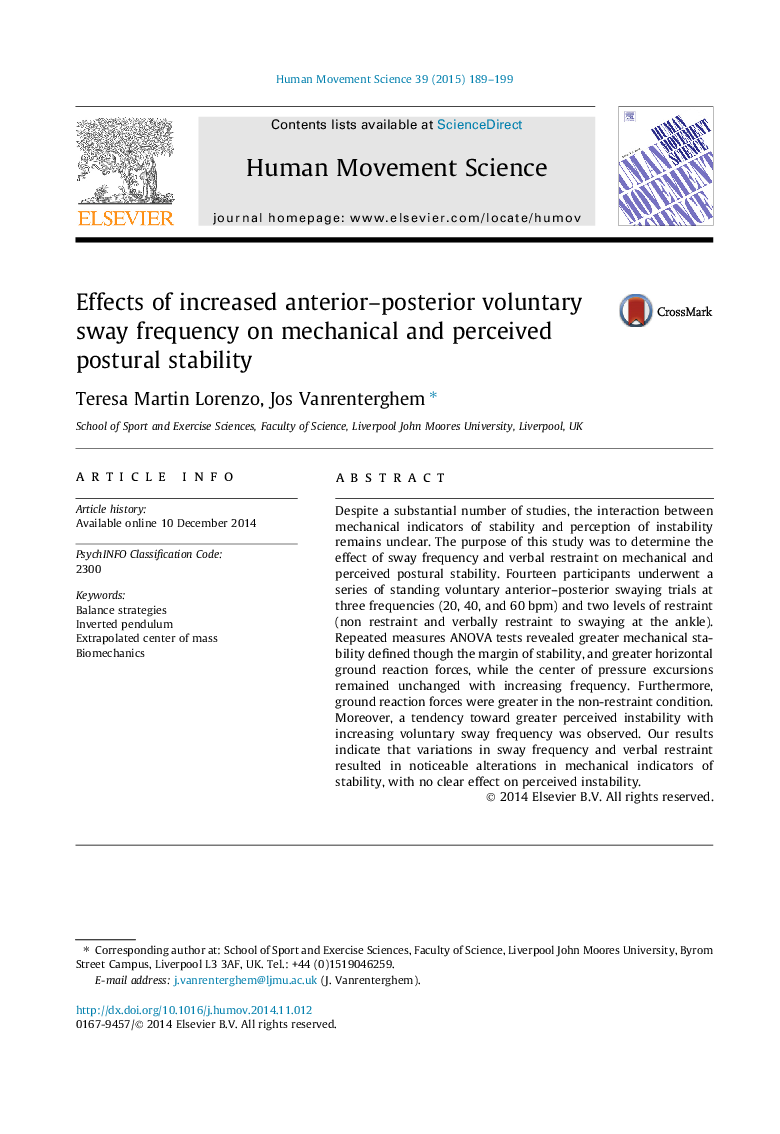| Article ID | Journal | Published Year | Pages | File Type |
|---|---|---|---|---|
| 928299 | Human Movement Science | 2015 | 11 Pages |
•Despite increased voluntary sway frequency, a larger margin of stability was observed.•Perceived instability tendency to increase with sway frequency could limit the use of mechanical stability limits.•Around the functional base of support, a wider area can be delimited in which balance can be maintained.
Despite a substantial number of studies, the interaction between mechanical indicators of stability and perception of instability remains unclear. The purpose of this study was to determine the effect of sway frequency and verbal restraint on mechanical and perceived postural stability. Fourteen participants underwent a series of standing voluntary anterior–posterior swaying trials at three frequencies (20, 40, and 60 bpm) and two levels of restraint (non restraint and verbally restraint to swaying at the ankle). Repeated measures ANOVA tests revealed greater mechanical stability defined though the margin of stability, and greater horizontal ground reaction forces, while the center of pressure excursions remained unchanged with increasing frequency. Furthermore, ground reaction forces were greater in the non-restraint condition. Moreover, a tendency toward greater perceived instability with increasing voluntary sway frequency was observed. Our results indicate that variations in sway frequency and verbal restraint resulted in noticeable alterations in mechanical indicators of stability, with no clear effect on perceived instability.
